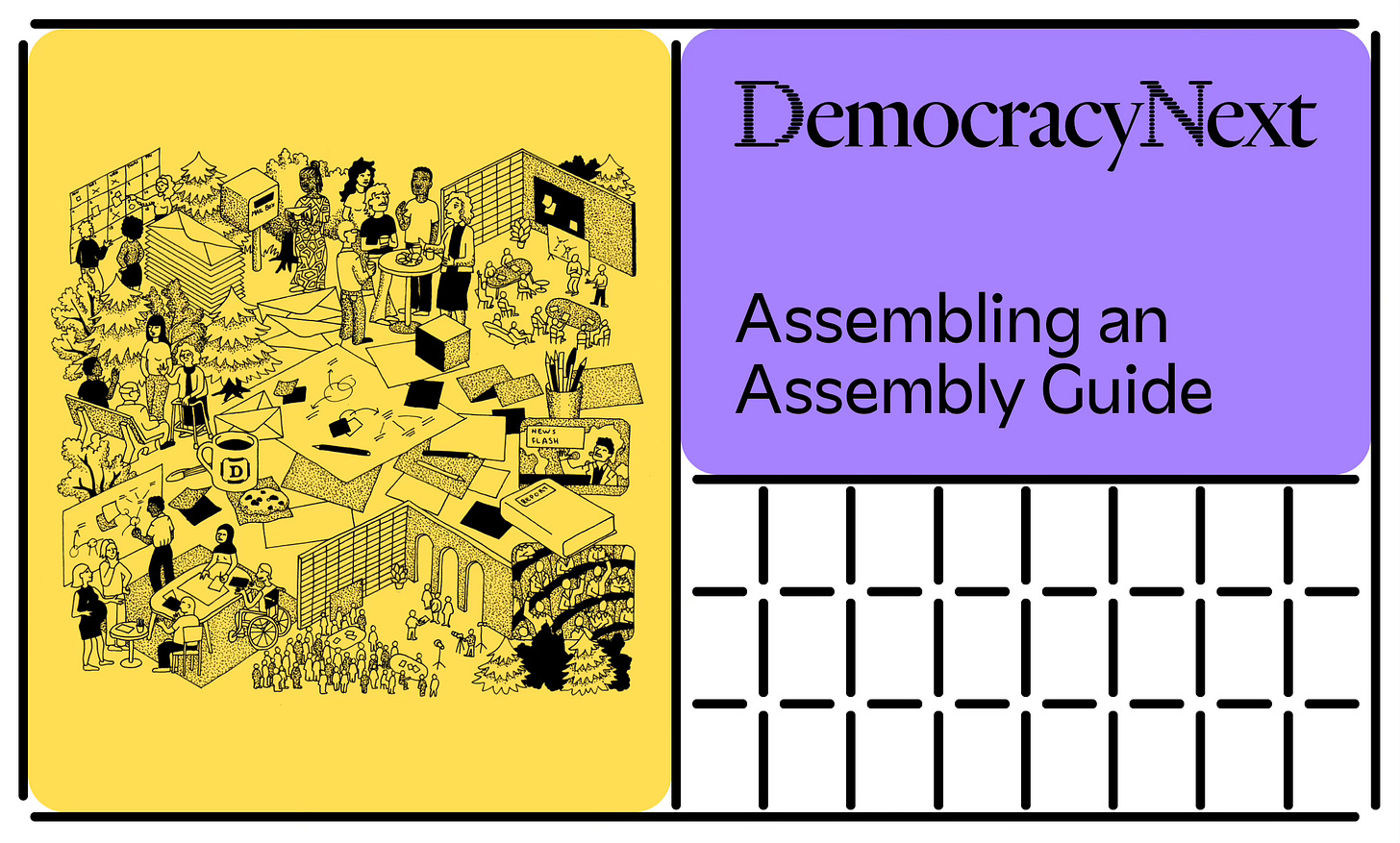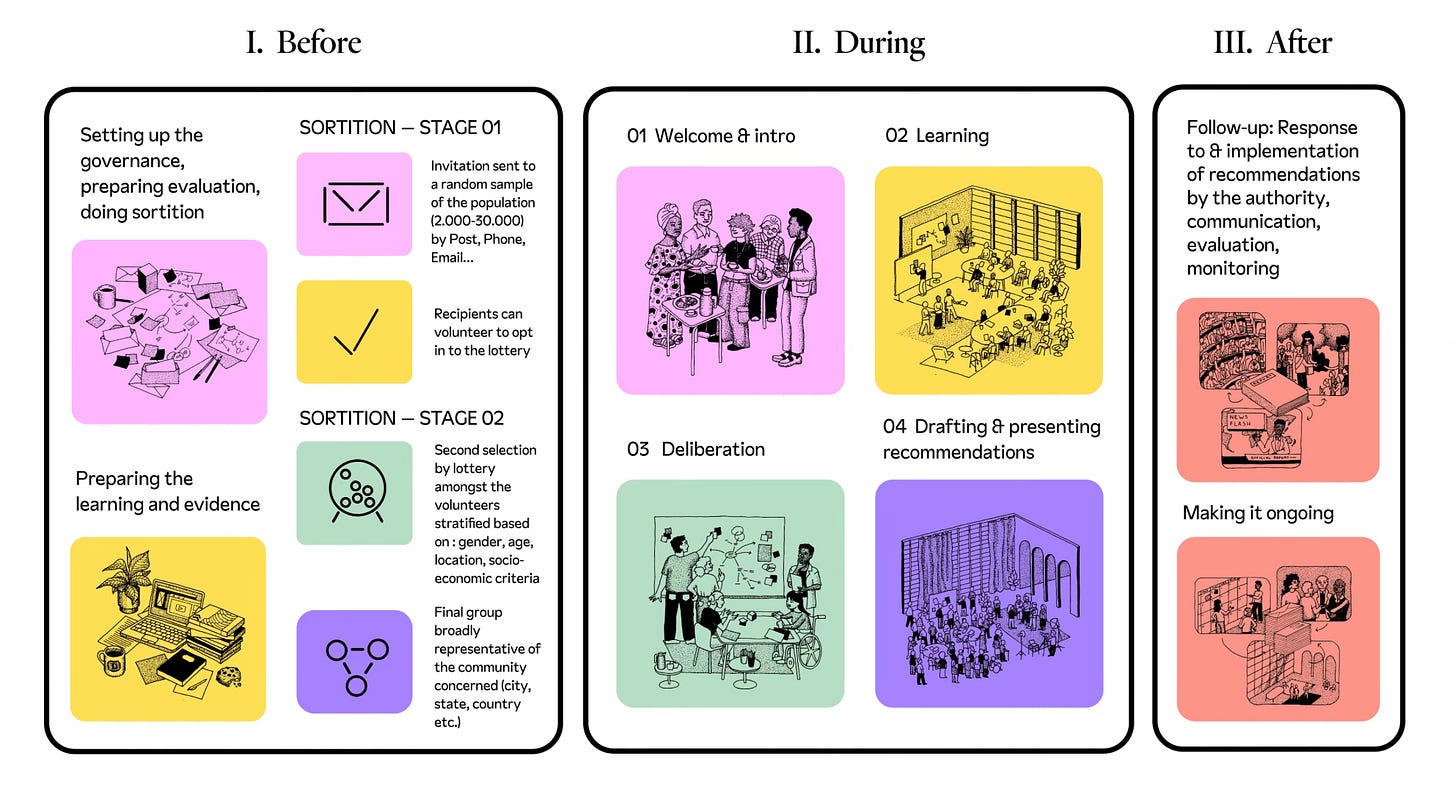🪜 Big questions, detailed answers: Our definitive How-To Guide to Citizens' Assemblies is here
We've poured our knowledge and experience into this guide — use it and share widely
One thing we’re always asked at DemocracyNext is, how does a successful Citizens’ Assembly work?
With a big thanks to our collaborators Adèle Vivet and VillageOne, we’re excited to share our richly detailed, illustrated answer to that question on our website. We previewed this back in June, and now it’s ready: the DemocracyNext Assembling an Assembly Guide is live at assemblyguide.demnext.org! Please note the guide is also available as a print-formatted 78-page PDF.
This document represents our effort to walk you through the process from start to finish—from randomly selecting Assembly members, to deliberation, to long-term institutionalisation.
"This extensive guide is the culmination of years of research and experience, building upon my work with Claudia Chwalisz at the OECD before the launch of DemNext, and the expertise and best practices of the international community of Citizens’ Assembly experts.” said Ieva Česnulaitytė, DemocracyNext Founding Head of Research and Learning. "Our goal is simple: to equip everyone with the principles and practices necessary to organize a successful Citizens' Assembly in their context — in a sense, to help democratise the creation of Assemblies themselves."
Perhaps the best way to convey how much information is in the guide is to share the chapter list below. Take a look, and dig in:
Introduction
Why run a Citizens’ Assembly?
Why do Citizens’ Assemblies work?
Examples of Citizens’ Assemblies
Hear from Assembly Members
1. Before the Assembly
1.1 Conditions for success
1.2 Governance: Setting up the team
1.3 Preparing the evaluation
1.4 Designing the Assembly
1.5 The sortition process: Selection by lottery and stratification
1.6 Preparing learning and evidence
2. During the Assembly
2.1 Onboarding Assembly Members
2.2 Facilitating learning and deliberation
2.3 Drafting recommendations and voting
2.4 Delivering recommendations
3. After the Assembly
3.1 Follow-up
3.2 Member aftercare
3.3 Next steps and institutionalisation
A Citizens’ Assembly based on the practices outlined above will strengthen public trust, produce reliable outputs that garner legitimacy, and have tremendous impacts on power and policy. If we’ve done our job right, this guide can help others to create more successful Assemblies, building on more than 600 global examples. Our hope is that it becomes a resource for people around the world, in much the same way that the OECD Catching the Deliberative Wave report, written by the DemNext founding team, has become a touchstone, translated into multiple languages.
They are called Citizens’ Assemblies, after all, because citizens—all of us—are the ones who ultimately must be empowered to co-create (i.e. assemble) them, together.
And remember, if you have questions or feedback on the guide, or want to get in touch for any reason, please don’t hesitate! E-mail us at hello@demnext.org.




